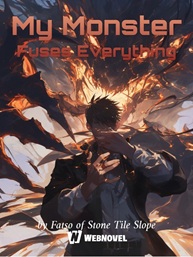The Rise Of Australasia - Chapter 124
Chapter 124: Chapter 124: Navy Expansion
рlease reading οn ΒOXΝʘVEL.ϹΟM
“Your Highness, there is an issue at present, which is the naming of the imitation firearms. Please give a name to our new firearm to demonstrate its power,” said the Australian expert with a smile.
Naturally, the task of naming the firearm could only be entrusted to Arthur, and it was also a good opportunity to flatter him.
“Since the firearm is a joint imitation made by German experts and Australia, let’s call it the GA-1902 Artillery. I hope that with the efforts of all of the experts from Germania and Australia, the GA series firearms can become world-renowned,” Arthur said after some thought.
Now Australia has two rapid-fire firearms that can be produced independently, one is the CA-i Machine Gun developed during the time of Duke Arthur, and the other is the GA-1902 Artillery they have now.
If the CA and GA series can successfully become world-renowned, it will prove that Australia’s military industry is genuinely successful.
“The faster the construction of the production line, the better. I will instruct the Ministry of Defense to quickly hand over the procurement list to you. The task of the military factory in the future will be to quickly master the construction technology of the GA-1902 Artillery and equip our military with a large number of this type of artillery,” Arthur ordered.
(vitag.Init = window.vitag.Init || []).push(function(){viAPItag.display(“vi_765923973”)})
Now that the firearms have been researched and imitated successfully, it is time to establish a procurement list for production.
At present, the training of Australia’s artillery unit relies on the few CA-i machine guns, so it is time for them to see something better.
Yes, Your Highness!” The Australian experts promptly replied.
Arthur acted quickly and summoned Minister Kent of the Ministry of Defense a few days after leaving the military factory and determined the detailed procurement list for the Ministry of Defense.
Since the Lee-Enfield Rifle, Maxim Machine Gun, and small-caliber firearms had already been purchased previously, the procurement list this time was very brief, with just over 100 GA-1902 Artillery pieces.
Though it may not seem numerous, the time needed to produce these firearms is not short, it may require at least four to five months.
If it takes at least an additional month to build the production line, it means it will take at least six months to complete the production of these guns.
Fortunately, the Australian Army can afford to wait now; both the reorganization of the First Division and the Guard Division will take at least half a year or even a year.
After not having much leisure time at the manor house, Arthur received excellent news for Australia that, after more than a year of learning and research, the experts at the shipyard have taken the first step in mastering the theory and construction technology of the Brunswick-class battleship.
Of course, building a complete battleship in this era is not that simple. Even with the guidance of many German experts, these Australian experts have only taken the first step in mastering the construction technology.
Unless the entire construction process takes place under the command and guidance of the experts from Germania, these Australian experts are still far from independently building a complete battleship.
However, this is already excellent news since the German experts are already here. As long as they successfully build one or two ships under their command and assistance, Australia will have thoroughly mastered the construction technology of the Brunswick-class battleship.
(vitag.Init = window.vitag.Init || []).push(function(){viAPItag.display(“vi_765923973”)})
But Arthur does not want Australia to purchase two battleships now. Waiting for the birth of dreadnoughts that will take place in a few years, the current battleships will become scrap metal.
Arthur would not be foolish enough to spend nearly millions of pounds now to buy two scrap piles.
In order to let these experts master more skills and even the ability to independently build battleships, Arthur has developed a plan to send batches of these experts to Germany for learning. With the good relationship between Australia and Germania, these experts can also master the ability to build large warships in Germany’s shipyards.
Of course, more experts will stay in Australia. Although Australia has no plans to build large warships in the short term, some midsize and small warships are still being built.
While this may not give them new abilities, it will make them more familiar and prepare for the future plans to build dreadnoughts.
Currently, Australia’s naval power is relatively weak, and the strongest warships are merely light cruisers with a tonnage of just over 4,000 tons built more than a decade ago.
Many coastal defense ships and small escort ships make up Australia’s Navy. Most of these ships have tonnages of less than 3,000 tons. While they may be useful patrolling the coast ordinarily, they can only be cannon fodder or be confined to the harbor when facing a real navy.
After careful consideration, Arthur suggested that the government order two ironclad cruisers and three escort ships from the shipyard to expand Australia’s naval size.
These two armored cruisers are Duke-class armored cruisers, modified from the British Orlando-class armored cruisers. The ship’s body is 93.5 meters in length, 17.63 meters wide, and 7.01 meters high, with 6,500 horsepower, a regular cruising speed of 18 knots, and a short-term maximum speed of 19 knots.
In terms of firepower, the Duke-class armored cruisers have two 234-mm main guns, ten 152-mm guns, and several small 6-pound and 3-pound guns. The Duke-class light cruisers have a tonnage of 5,800 tons, far exceeding the current largest tonnage naval ship in Australia.
After ordering these two light cruisers, Australia’s naval force will experience significant growth, and at least coastal security can be more assured.
These two Duke-class armored cruisers were named “HMAS Australia” and HMAS Duke of Arthur,” with an estimated construction time of seven months, and will be launched just in time for Australia’s next National Day.
(vitag.Init = window.vitag.Init || []).push(function(){viAPItag.display(“vi_765923973”)})
Three escort ships are coastal defense ships with tonnages of just over 2,000 tons. Their primary task is to patrol and defend the coasts of Australia and the New Guinea Colony. It is already satisfactory if they can complete these tasks.
The total cost of the two Duke-class light cruisers and three escort ships is not high, only just over 100,000 pounds.
Among them, the cost of the two light cruisers accounts for nearly 70,000 pounds, and the cost of the three escort ships is not even half of that of the light cruisers.
With the completion and launch of the five warships, Australia’s naval strength will experience a certain growth.
Although it still cannot compete with European nations, at least it is not as bleak as before.
A year later, Australia’s naval strength could enter the top five in Asia, although it is not enough, it has indeed become a surplus compared to before.
Minister Kent is the happiest with the expansion of the navy. As a talent from the British Empire, Minister Kent proposed the importance of the navy to Australia early on, believing that the navy is more important than the army for Australia.
In fact, it is. As a large island country, Australia also has overseas territories such as New Guinea and many other islands.
Under such circumstances, the importance of the navy has greatly increased and is indeed more important than the army.
To maintain national stability, it is necessary to ensure the strength of the navy, not only to defend the coastline but also to ensure the safety and stability of any overseas territories.
Of course, all Australians should know about this.
The importance of controlling public opinion is manifested. In just a few days, the whole Australia learned about the navy’s expansion plan, and the vast majority of people agree and strongly support it.
(vitag.Init = window.vitag.Init || []).push(function(){viAPItag.display(“vi_765923973”)})
Most Australians are of British descent, and Britain is the first superpower and first naval power in the world today.
Australians have a special affection and favor for the navy. When they learned that the government wanted to expand the navy and purchase new warships, many Australians spontaneously took to the streets, holding banners in support of the government’s actions.
Even some Australians with just a good income were asking the government in various ways about possible funding gaps.
They even claimed that if the government had financial difficulties, they could organize fundraising to help the government voluntarily.
Arthur naturally rejected their requests. The purchase of warships only cost 100,000 pounds, which is a small sum even for the Australian Government.
However, the love of these Australians for their country still allowed Arthur to see the hope for Australia to rise.
If the recognition and love of most Australians for Australia can be so deep, then Australia can definitely grow into a strong country.
As the saying goes, where the people’s heart is, victory follows, and the great cause can be achieved. Any country with the support of its people has a terrible potential. Even if the country is currently in a backward or even declining state, as long as the people’s hearts are all aligned, it can definitely grow into a strong and prosperous country.
Shortly after Australia announced its plans to expand its navy, it received congratulatory messages from New Zealand.
Under the promotion and propaganda of the Alliance Party, New Zealanders are now very concerned about Australia’s situation.
The Alliance Party even made a considerable income by selling newspapers containing news about Australia.
The expansion of the Australian navy aroused the envy of New Zealanders. Composed of British people who value the navy, New Zealand’s navy is still small and similar to Australia’s navy before. It consists almost entirely of small coastal defense ships and escort ships, some of which are even older than Arthur.
(vitag.Init = window.vitag.Init || []).push(function(){viAPItag.display(“vi_765923973”)})
Time flies, and May soon passes.
In addition to the birth of the GA-1902 artillery and the expansion of the Australian navy, two relatively important events occurred worldwide.
The first is Cuba’s independence. On May 20,1902, on this special day, Cuba officially “independently” from the control of the United States, and with the help of the United States, established the Cuban Republic.
Unfortunately, Cuba is still under the control of the United States, and even a year later, the United States forcibly leased two naval bases from it.
The second matter was related to the British Empire, which is the end of the Second Boer War.
The Second Boer War began on October 11,1899, and lasted until May 31,1902, for two and a half years.
This was a war about British and Dutch descendants fighting for territory and resources in South Africa, and it eventually ended with a tragic victory for the British Empire.
The British Empire deployed more than 400,000 troops, and even before Australia’s independence, some Australian troops were conscripted.
More than 22,000 people were killed in the war, the largest loss for the British Empire in recent wars.
Even the end of the war was not a complete victory for the British Empire. Under the huge losses of the war and international public opinion pressure, the British Empire hastily signed a contract with the Boers.
How much did the British Empire lose in this war? The two-and-a-half-year war consumed a staggering £220 million in war expenses of the British Empire, and the other losses in weapons and equipment and resources were countless. ’ After this war, the British Empire connected its southern African colonies into a piece and controlled the corridor leading to the Great Lakes region in the African hinterland.
However, this war also marked the end of British overseas expansion history. The high cost of modern warfare has led British politicians to abandon the expansion and defend overseas territories and their homeland, as well as to abandon isolationist policies.
(vitag.Init = window.vitag.Init || []).push(function(){viAPItag.display(“vi_765923973”)})














